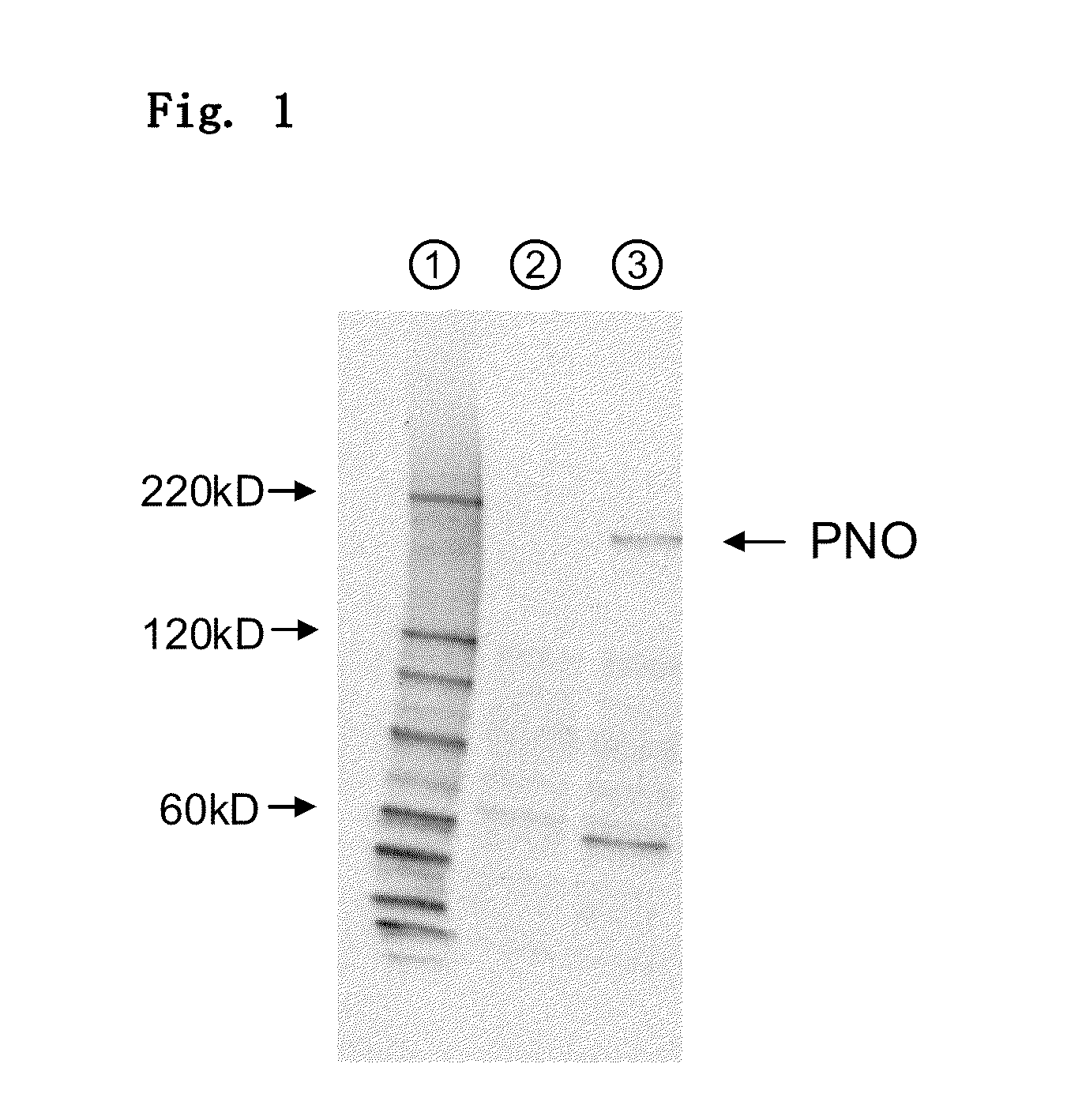Amino acid producing microorganism and a method for producing an amino acid
a technology of amino acid and microorganism, which is applied in the field of microorganisms to achieve the effect of efficient production of l-amino acid
- Summary
- Abstract
- Description
- Claims
- Application Information
AI Technical Summary
Benefits of technology
Problems solved by technology
Method used
Image
Examples
example 1
Construction of Alcohol Dehydrogenase (AdhE) Mutated Strain Derived from Escherichia coli
[0234]An Escherichia coli strain having mutant alcohol dehydrogenase AdhE was constructed so as to obtain an aerobically ethanol assimilable Escherichia coli strain. The nucleotide sequence of the wild-type AdhE gene (adhE) derived from Escherichia coli and the encoded amino acid sequence are shown in SEQ ID NOS: 21 and 22, respectively.
[0235] Construction of Escherichia coli MG1655::PL-tac adhE Strain
[0236]Substitution of the PL-tac promoter for the promoter region of the Escherichia coli adhE gene was performed by “Red-driven integration”, which was developed by Datsenko and Wanner (Datsenko, K. A. and Wanner, B. L., 2000, Proc. Natl. Acad. Sci. USA., 97:6640-6645) using the excision system derived from λ phage (Cho, E. H., Gumport, R. I., and Gardner, J. F., 2002, J. Bacteriol., 184:5200-5203).
[0237]By this technique, a genetic recombinant strain can be constructed in one step using a PCR pr...
example 2
Construction of a Plasmid to Express the Pyruvate Synthase Gene of Chlorobium tepidum and Measurement of the Activity
[0251] Construction of a Plasmid to Express the Pyruvate Synthase Gene of Chlorobium tepidum
[0252]Chlorobium tepidum is a meso- to thermophilic autotrophic bacterium, and its optimum growth temperature is 48° C. The genome sequence of the Chlorobium tepidum TLS strain has been elucidated by Eisen et al. (Eisen, J. A. et al., 2002, Proc. Natl. Acad. Sci. USA, 99:9509-9514). The pyruvate synthase gene was isolated from this strain, and a plasmid expressing it was constructed.
[0253] Measurement of Pyruvate Synthase Activity in a Strain Expressing the Pyruvate Synthase Gene of Chlorobium tepidum
[0254]PCR was performed using the chromosomal DNA of the Chlorobium tepidum TLS strain (ATCC 49652) as the template and the oligonucleotides shown in SEQ ID NOS: 35 and 36 to amplify a pyruvate synthase gene fragment. The gene fragment was digested with Sad, and inserted into the...
example 3
Construction of a Plasmid to Express the Pyruvate Synthase Gene of Chlorobium tepidum, Flavodoxin NADP+ Reductase Gene of Escherichia coli, and Ferredoxin Gene of Escherichia coli
[0260]By using the flavodoxin NADP+ reductase gene of Escherichia coli (fpr) and the ferredoxin gene of Escherichia coli (fdx) as coenzyme regenerating systems, a plasmid simultaneously expressing all three genes, including the pyruvate synthase gene, was constructed.
[0261] Construction of a Vector to Amplify the Flavodoxin NADP+ Reductase Gene of E. coli
[0262]PCR was performed using the chromosomal DNA of the E. coli MG1655 strain as the template and the oligonucleotides shown in SEQ ID NOS: 42 and 43. The gene fragment was digested with SmaI and inserted into the SmaI site of pMW-Pthr to construct a plasmid for amplifying the flavodoxin NADP+ reductase gene, which was designated pMW-Pthr-fpr.
Construction of a Plasmid to Amplify the Ferredoxin (fdx) Gene of E. coli
[0263]PCR was performed using the chro...
PUM
 Login to View More
Login to View More Abstract
Description
Claims
Application Information
 Login to View More
Login to View More - Generate Ideas
- Intellectual Property
- Life Sciences
- Materials
- Tech Scout
- Unparalleled Data Quality
- Higher Quality Content
- 60% Fewer Hallucinations
Browse by: Latest US Patents, China's latest patents, Technical Efficacy Thesaurus, Application Domain, Technology Topic, Popular Technical Reports.
© 2025 PatSnap. All rights reserved.Legal|Privacy policy|Modern Slavery Act Transparency Statement|Sitemap|About US| Contact US: help@patsnap.com


